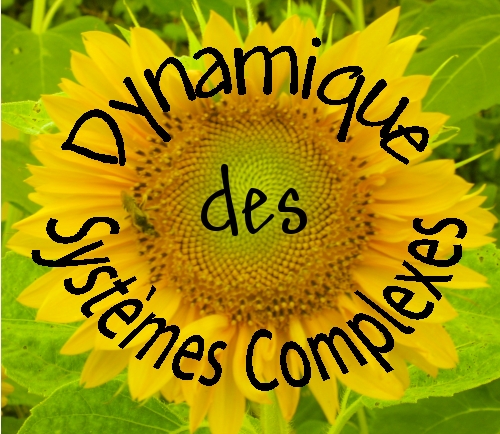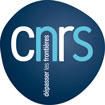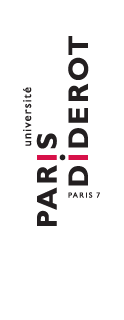Invited lectures
Incompatible growth, growth tensor, frame invariance and dissipation inequality. Homeostasis and target stress. Application to arteries.
2. Electromechanical coupling in muscle contraction
Action potential and ion currents in cells. Excitability. System of nonlinear ordinary differential equations: FitzHugh-Nagumo and beyond.
3. Active stress generation and feedback
Active stress and active strain in the cardiac muscle. The specific role of ionic currents. Mathematical prescription for the active stress tensor.
We will review recent progress on the mathematical modeling of crawling and swimming motility of cells. An expository lecture will be the first of the series.
It is now widely appreciated that normal tissue morphology and function rely upon cells' ability to sense and generate forces appropriate to their correct tissue context. Research in cellular mechanotransduction often focuses on how extracellular physical forces exerted at the cell surface are converted into biochemical signals through the activation of signaling pathways. However, mechanical forces applied on surface-adhesion receptors (e.g. integrins or cadherins) are also channelled along cytoskeletal filaments and concentrated at distant sites in the cytoplasm and in the nucleus. I will discuss two different mechanotransduction cases through the mechanisms by which (i) non-penetrating blast waves damage the brain and (ii) endothelial cells regulate nuclear shape and function in response to cell shape changes. Throughout, I will point to outstanding experimental challenges for the quantitative control of cell morphological parameters and the faithful reproduction of the complex cellular microenvironment by using microfabricated tools.
Plant cells typically grow via coordinated softening of the cell wall, allowing anisotropic expansion driven by internal turgor. The plant exploits the inherent rigidity of its pressurized cells to drive its root down into soil and its shoot upwards against gravity. Plant cell walls are fibre-reinforced composites involving multiple different polymers, which enable the plant to regulate its mechanical properties under the action of hormones and enzymes. I will explain how models derived at three different lengthscales (the cell wall, the individual cell and multicellular tissue) can be integrated to investigate the process of root gravitropism, whereby the root senses and responds to a gravitational stimulus. At the level of the cell wall, it is necessary to develop new constitutive models that couple crosslink kinetics to wall rheology. At the cell level, one can exploit the theory of extensional flows of thin sheets of viscous liquid to describe anisotropic cell expansion. At the tissue level, a computational approach capturing individual cells can be complemented by continuum mechanical models to describe root growth and bending, all of which must be closely integrated with relevant biological processes. The work I will describe has been undertaken in collaboration with colleagues at the Centre for Plant Integrative Biology at the University of Nottingham, UK.
Biological matter is inherently dynamic and exhibits active properties. A key example is the force generation by molecular motors in the cell cytoskeleton. Such active processes give rise to the generation of active mechanical stresses and spontaneous flows in gel-like cytoskeletal networks. Active material behaviors play a key role for the dynamics of cellular processes such as cell locomotion and cell division. We will discuss generic physical properties of active gels in a continuum description. We apply this theory to intracellular flow patterns that are created by active processes in the cell cortex. By combining theory with quantitative experiments we show that observed flow patterns result from profiles of active stress generation in the system. We will also consider the situation where active stress is regulated by a diffusing molecular species. In this case, spatial concentration patterns are generated by the interplay of stress regulation and self-generated flow fields.
Biofilaments are everywhere in and around us. In terms of their versatility and their innumerable biological roles filaments are among of the best multipurpose inventions of nature. Besides being important mechanical components of our cells, providing the cytoplasm and the cell membrane with most of its rigidity, they perform a lot of amazing tasks within the cells. They push and pull, endure compression and tension, transport cargos, mix the cell's interior, store and transmit genetic information, make cells grow, divide, make them crawl, swim and even sense their environment.
In this lecture series we make a physical journey through the miraculous world of biological filaments. Our focus will be on how their physical properties determine their biological role (and vice versa) with some surprises on the way.
We discuss first some general biological features of tumor progression, including tumor growth, angiogenesis, matastasis, inflammation and current therapeutic approaches. Next, we introduce a general class of statistical physics models used to describe cancer growth.
We discuss recent development on cancer stem cells in solid tumors. In particular we review our recent findings for melanoma such as the characterization of cancer stem markers. Next, we describe a new quantitative framework that we have obtained combining cell biology experiments and statistical physics models to understand the role of cancer stem cells in tumor growth.
I'll discuss these points on examples of viruses of different types, chromatin fiber and its ingredients, cell patterns induced by topological constraints in oocytes (epithelium layers on a sphere), instabilities in lipid tubules and interaction of proteins with lipid tubules in the vicinity of instabilities.
Synchronous activity of all cells in a tissue is a key to the proper functioning of several important organs, in particular those performing a mechanical task. Specific examples include the heart, whose function is to pump blood throughout the whole body, or the uterus, whose contractions lead to the expulsion of the newborn. One of the motivations for understanding and controlling the rhythm comes from the consequences associated with improper synchronization (arrhythmias) in such tissues.
In the two examples above, the mechanical activity (contraction) is triggered by electric waves of depolarization. I will begin by discussing the mechanism leading to synchronization in these two organs. Whereas in the heart, the activity is centrally coordinated by specialized (pacemaker) cells, spontaneously oscillating cells have not been found in the uterus. The physiological changes observed in the organ during pregnancy suggest a prominent role of the coupling between the cells in the tissue. I will discuss the situation using model studies.
In the heart, the control of arrhythmias is mostly done by using electric fields. Defibrillation shocks remain the only reliable way to treat patient with a severe arrhythmia, such as ventricular tachycardia. I will discuss the physical aspects of the interaction between an externally applied electric field and cardiac tissue, and the importance of devising treatments involving electric fields with a weaker intensity. In particular, I will present the method of Low Energy Antifibrillation Pacing, and its potential advantages for the treatment of arrhythmias.
Although the description of cells at the single cell level has brought a lot of information in a variety of situations, many physiological or pathological situations involve communities of cells interacting together. Among the many available examples, I'll focus on two representative systems: First, chemotactic bacteria that communicate via soluble factors and, second, monolayers of epithelial cells that mechanically adhere together. A significant part will be devoted to the description of the experiments and the experimental techniques, most of them involving microfabrication (microfluidics, force measurements).
In these lectures, I will present experimental perspectives on the study of tissue-scale biological processes. I will focus on in vitro approaches and, in particular, on those that involve growing mammalian cells in three-dimensional (3-D) environments that recapitulate properties of real tissues.
To begin, I will provide an introduction to the motivations, both from the clinic and from basic biology, for the development of 3-D cell culture and tissue engineering. I will then present an overview of the biological and biophysical concepts that constrain the design of biomaterials, bioreactors, and specific cell culture experiments. I will cover basic treatments of mass transfer and mechanics in living materials as they relate to cellular metabolism, growth, and interactions. I will emphasize the ways in which the dimensionality (2-D vs. 3-D) of a culture impacts these phenomena. I will also point to the recurrent challenge of differentiating between cellular, chemical, and mechanical modes of interaction within a tissue.
Based on this conceptual foundation, I will turn to a discussion of experimental approaches for 3-D cell culture. I will touch on questions of sources of cells, design of materials to act as matrices, and design of reactors to control the chemical and mechanical environment experienced by the culture. In a review of the state-of-the-art of these techniques, I will emphasize approaches that have allowed researchers to dissect biophysical mechanisms by, for example, independently controlling the solute chemistry, matrix chemistry, and mechanical stresses and strains. Throughout, I will point to outstanding challenges for the quantitative control and measurement of the physical characteristics within complex cultures.
To illustrate these concepts and approaches, I will present in more detail work from my laboratory and those of my collaborators on the use of 3-D culture in three contexts: first, the study of solid tumor cancers, with an emphasis on the interplay between dimensionality, metabolic stress, cell-matrix and cell-cell signaling in defining the onset of vascular ingrowth; second, the development of synthetic scaffolds in which microstructure stimulates tissue and vascular growth in the context of wound healing; and third, studies of the biophysical processes that control the development of microvascular structure in vitro with a view toward growing functional vascular systems in the lab. I will conclude with perspectives on opportunities for physical scientists to shape the evolution of this field via the development of new conceptual frameworks and technical approaches.
Traction force microscopy is proposed to investigate cell migration. Two methods are used for measuring such forces : FTTC (Fourier Transform Traction Cytometry) and the adjoint method (AM) presented in a previous talk. Comparisons are made. The AM method is used to investigate the migration behavior of cancer cells on soft substrates. Different behaviors are observed depending on the invasiveness of such cells. Results concerning the MSD, the velocity of migration, the cell microstructure (cytoskeleton and focal adhesions) are also discussed.
Circulating cells (leukocytes, cancer cells) interact with the endothelium and are exposed to the flow. Details regarding the influence of the shear stress are shown using flow chambers or microchannels. Interactions are also measured in static conditions using AFM, to reveal the relevant adhesion proteins.
We investigate cell suspensions at different concentrations. The rheology reveals viscoelastic properties in relation with a fractal model. This model can be further explained using biphasic viscoelasto-plastic models, including a microscopic description of the yield stress. Comparisons can be made with the experiments. Finally cell suspensions are included within gels and viscoelastic properties are measured. It is shown that cells play an active remodeling role which leads to tissue breakdown.
The growth of spatially structured cell populations is very dependent on the diffusion of solutes and their spatial gradients. The lecture will describe methods used to model reaction-diffusion in growing populations of cells and how to solve these models both analytically and through numerical simulation. We will also review work where reaction-diffusion models were used to explain morphological features of bacterial biofilms and solid tumors, two distinct systems with important applications in medicine.
Rather than being solitary organisms, bacteria rely on many social traits (e.g. quorum sensing) to conduct population-level behaviors (e.g. biofilm formation, swarming motility). The lecture will explain the fundamentals of social evolutionary theory and how it can be applied to microbes to understand the evolutionary pressures driving social traits. We will also detail how the parameters governing social evolution can be measured by quantitative experiments and discuss how unveiling social interaction may lead to novel therapies against pathogenic bacteria.




